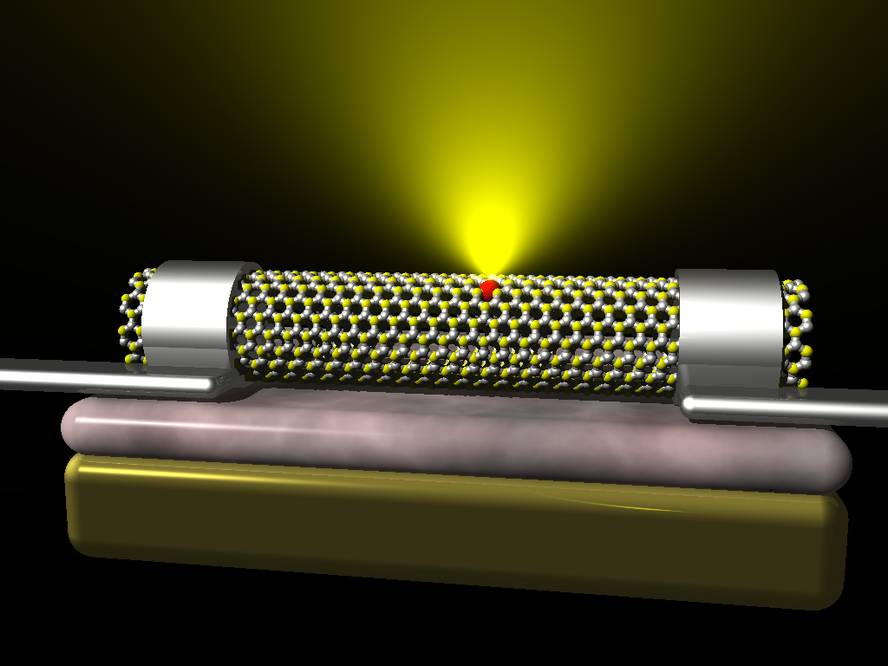They have converted defective nanotubes into light sources

Based on boron nitride nanotubes, UPV researchers have created a new light source suitable for the development of high-efficiency optoelectronic devices. The device has been proposed by Ángel Rubio and his colleagues from the UPV NanoBio Spectroscopy group. The device benefits from the structural defects of boron nitride.
Researchers have worked with hexagonal boron nitride, with properties much better than other metals and semiconductors currently used as light emitters for applications related to optical storage (DVD) and communications. It is one of the best ultraviolet light emitters on the market, according to Rubio.
The problem is that it emits light in a very limited range of ultraviolet light, so it cannot be used in applications that require the emission of light to occur at higher frequency intervals and in a controlled manner (for example, in applications with visible light).
In the study carried out in the group of NanoBio Spectroscopy of the UPV, a solution has been found to overcome this limitation.It has been shown that the application of an electric field perpendicular to the nanotube of hexagonal boron nitride allows it to emit light in the entire range of infrared to far ultraviolet, easily controlling the emission.
The operation of the device consists of using own (or induced) defects of the nanotubes. The controlled emission is possible thanks to the hollows of the nanotube wall. These gaps are due to the lack of a boron atom, a common error in its manufacture.
Rubio highlights the simplicity of the proposed device: “It is a device that works with failures and is easy to build and control. It has the same configuration as conventional transistors and the structure we propose would work on current devices.” The limit for the moment is economic. The result of this study, published in the journal Scientific Reports, is that there are still very few nanotubes of boron nitride and there is no synthesis process that allows making this process economically viable on a commercial scale.






